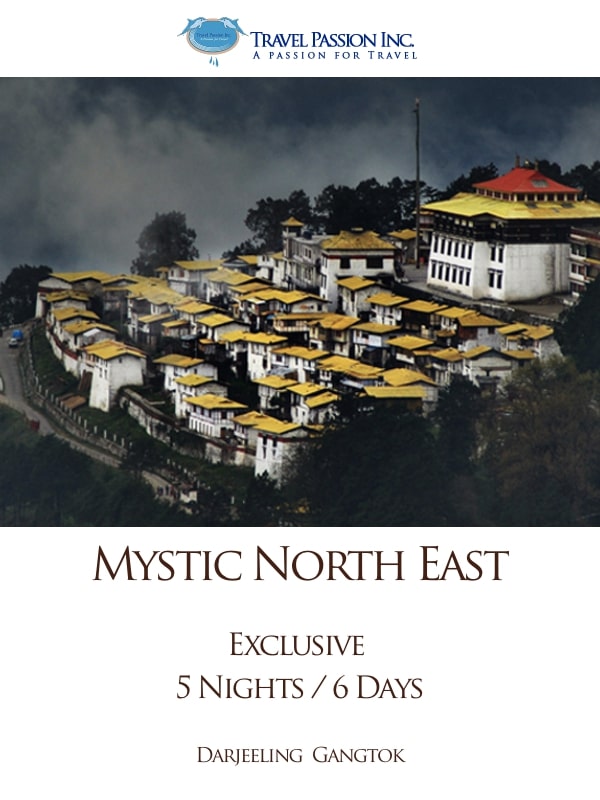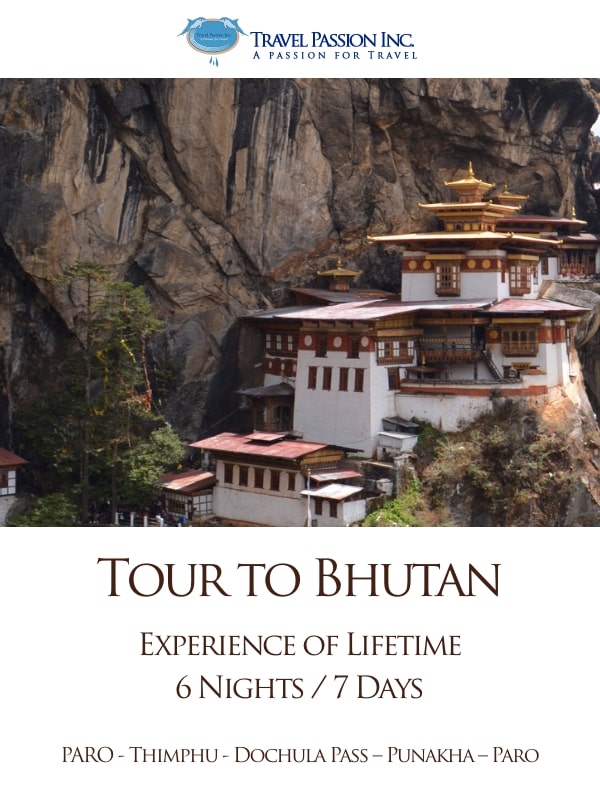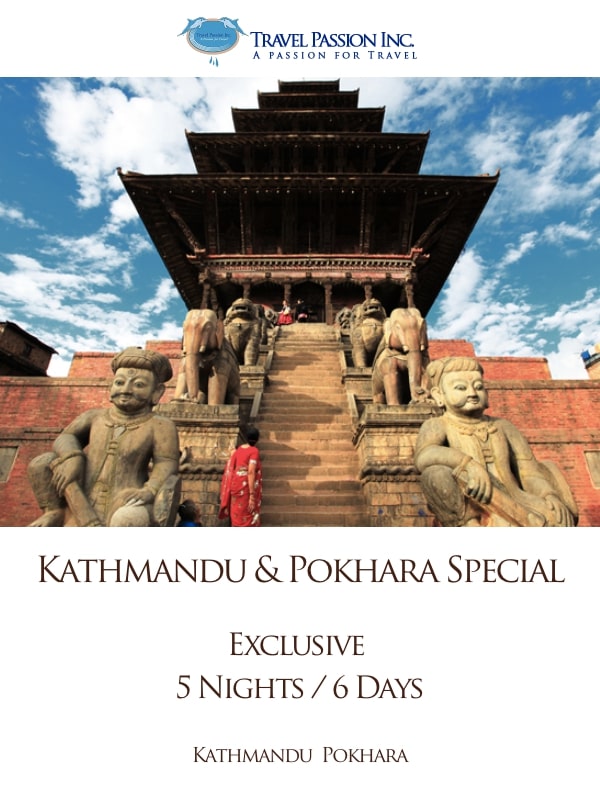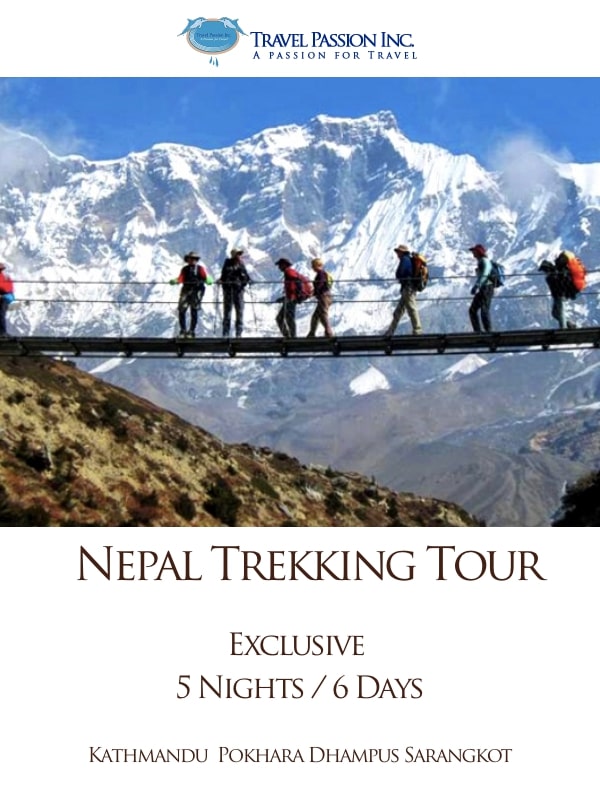Tour to Bhutan
Experience of Lifetime6 Nights & 7 Days – 2021-22

 Tour to Bhutan
Tour to Bhutan
Day 1: Arrive at Paro – Thimphu
After arriving & visa formalities and collection of baggage, you will be welcomed by our tour representative. Your entry can be through a flight or by road from Phuntsoling. In either case, you will head towards Thimphu post your arrival in Bhutan.
On the way to Thimphu, You will cross The iron chain bridge might look frightening at first, but once you start crossing it, it becomes very fun-This will be just a small break to familiarize you with the weather outside.
While crossing you will notice that it acts a lot like a trampoline, and while jumping is fun, be sure to be careful! When standing on the bridge and looking towards forward against the current of the river, it feels and looks as if you are flying on the bridge! There is a separate bridge next to this one that is specifically for cattle to use, as crossing over an iron chain bridge is very difficult and dangerous for them.
After your arrival in Thimphu, you will check-in at your hotel. You will relax & freshen up a bit, post which you will visit the following:-
Clocktower
Clock Tower Square has a tower with four clock faces located in Thimphu, capital of Bhutan. It is a famously known landmark in Thimphu.
The shops, restaurants, and hotels in the clock tower square have a blend of fine traditional and modern architectural Bhutanese design with multi-colored wood frontages, small arched windows, and sloping roofs. The buildings around the square are all small three-storied structures there are many shops, hotels, and restaurants surrounding the square.
The clock tower square is located below Norzin Lam, Thimphu above the national football stadium in the heart of the capital. The Clocktower has a typical Bhutanese architectural outlook with rich Bhutanese carvings and paintings. There is a traditional handcrafted dragon with golden painting on all the four faces of the tower which symbolizes the county as an independent dragon kingdom. The tower has beautiful paintings and carvings of flowers which add more magnificence to the tower.
- ◊ Overnight stay in a hotel in Thimphu.
Post breakfast you will do sightseeing’s in and around Thimphu:-
Folk Heritage Museum.
The folk heritage museum was open to the general public in 2001 upon completion. It treasures troves of culture and rich Bhutanese heritage provide rich insights into the Bhutanese ethos. Try to schedule your visit during the morning hours since the museum is less crowded at that time and there is plenty of sunlight to go around.
The folk heritage museum is housed in a replica traditional Bhutanese house learn first-hand about Bhutan’s rich cultural traditions, it’s a deeply rooted heritage which spans thousands of years and the Bhutanese way of life. The tour of this almost living museum will also give you a glimpse into how many rural folks of the country lives today following the ancient Bhutanese ways.
National textile museums:
The second important Museum that also opened its doors in 2001 is the National Textile Museum of Bhutan. During a trip to this museum you will get an up close and personal experience of the living national art of weaving. The changing exhibitions at the museum will introduce you to the major weaving techniques that the weavers employ to make these beautiful Clock Tower Clock Tower fabrics. It also gives you a chance to see the various styles of dressing of the men and women from different parts of Bhutan.
The museum’s exhibits follow 6 major themes:
- ◊ Wrap Pattern Weaves
- ◊ Weft Pattern Weaves
- ◊ Role of Textile in Bhuddism
- ◊ Historical achievements in textile
- ◊ Textiles made from different indigenous fibers
- ◊ The royal textile collection.
Tashichho dzhong
The Tashichho Dzhong is a Buddhist monastery cum fortress at the northern edge of Thimpu the capital city of Bhutan. The Dzhong was built on the western bank of the river Wang Chu, and has historically served at the seat of the DrukDesi or the Dharma Raja of Bhutan’s government.
After the kings assumed power in 1907 this post was combined with that of the king and Thimphu severed as the summer capital of the kingdom before becoming the full-time capital of Bhutan.
The original Thimphu Dzhong (the Dho–Ngyen Dzhong) is said to have been constructed in 1216 by Lama Gyalwa Lhanangpa. And was later taken over by Lama Phajo Drukgom Shigpo before the Dzhong was conquered by Shabdrung Ngawang Namgyal, who found the Dzhong to be too small and expanded it to what is now known as theTashichho dzong is also called the “fortress of glorious religion.” It was erected in 1641 and was subsequently rebuilt by King Jigme Dorji Wangchuck in the 1960s.
The Dzhong has been seat of the Royal government since 1952 and presently houses the Throne room and the Kings secretariat. The Tashichho dzong is also home to several ministries of the Bhutanese government, and the Central Monk Body which is the apex organization of the country’s main spiritual order. The monument welcomes visitors during the Thimphu Tsechu festival which is held in autumn each year. The Dzongs main structure is a two striped quadrangle with 3 storied towers on each of its four corners
Motithang Takin preserve
The Motithang Takin Preserve also known as the Thimphu Zoo by many is a small natural preserve for the Takin Bhutan’s national animal. It was originally a mini zoo, but it was converted in a preserve later on as the Takin. The mini zoo contained a small number of Takin but the King of Bhutan later decreed that it was improper for a Buddhist nation to keep an animal in captivity. The animals were set free and the zoo was shut down, but for some reason the Takin refused to leave the area for the forests nearby.
Instead, the animals were frequently found roaming around the streets of the capital city in search for food. As a result, the government decided to demarcate an 8-acre fenced location as the Motithang Takin Preserve. The preserve is a forested preserve that mimics the Takin’s natural habitat, in addition to the Takin there are a few musk deer and barking deer that live inside the preserve. There are plans to expand the preserves collection to include other rarely seen animals that live in Bhutan, currently, the preserve plans to add the Red Panda and the Himalayan Serow to the preserve.
Kuensel phodrang
The Kuensel Phodrang or the Buddha point is the world’s largest sitting Buddha statue, the statue is 167 feet high. The statue is situated on top of a hill overlooking the city of Timphu, it can be accessed by road and is about 15 minutes away from the city’s center. The word Kuensel means everything is clear and from this place, you will surely enjoy a great view of the Thimphu Valley on both sides. The statute will house a temple inside it, the statue and its adjoining car park and recreational center are currently under construction and is expected to be ready by December 2012.
The statue is constructed out of bronze and is studded with many semi-precious stones. Since they are no factories in a country that can make such a large bronze cast structure, this statute is being manufactured in China and the pieces are brought to Bhutan and are assembled here. On the drive to the statue, the steep winding hill road offers an unparalleled view of the city of Thimphu and is an excellent place to capture a view of the city especially after dark. A journalist once described the view as “seeing an oasis of light in the desert of darkness “as the city light of Thimphu shine very bright in an otherwise dark Thimphu valley.
- ◊ Overnight stay in a hotel in Thimphu.
Post early breakfast, you will drive towards Punakha via Dochula Pass. We will stop over for tea at Dochula (3,100 m), where on a sunny day, you can get stunning views of the Himalayan ranges. The Dochu La Pass is probably the best-known mountain pass in Bhutan. Located at an altitude of 3150 meters above sea level, the Dochu La Pass is about 30 kilometers away from the capital city Thimphu and the road to Punakha.
On a clear day, the pass offers visitors a spectacular view of the majestic eastern Himalayan Ranges. A cup of hot coffee or tea at the pass has almost become part of a tradition for people traveling to and fro from Punakha to the capital city. There is a small cafeteria at the pass that offers a chance for travelers to enjoy a hot beverage or a snack, it is located just off the road and overlooks the pass and is an ideal place to sit back, relax and enjoy the view.
Another striking feature at the pass the 108 Druk Wangyal Khangzang Chortens, that were built for the well-being of all sentiment beings on earth. The 108 Chorten were built as a tribute to the Kings of Bhutan for their selfless service and leadership they offer to the people of Bhutan. These Stupas or Chortens also represent the people’s love, appreciation, and loyalty towards the country’s King.
Punakha Dzong
The Punakha Dzhong or the Pungtang Dechen or Phortang Dzhong is located at the confluence of the Mo Chhu and the Po Chhu River, combine to form the Puna Tsang Chu which in turn is a tributary of the mighty Brahmaputra River. The Dzhong was constructed by Sahbdrung Ngwang Namgyal Wangchuck in 1638 on the exact spot as prophesized by the Guru Rinpoche some 800 years ago. According to the prophecy of Guru Rinpoche “a person named Namgyal will arrive at a hill that looks like an elephant”.
And lo behold! Shabdung Ngawang Namgyal found that the peak of the hill was in the shape of an elephant’s trunk and built the Dzhong at that very spot. Another legend associated with the Dzhong is that of Zowe Palep, the architect of the Dzong received a vision of the Dzhong in his sleep. This vision got imprinted in the architect’s mind and enabled him to construct the Dzhong without putting his plans to paper.
The Punakha Dzhong is the second largest and the second oldest Dzong in Bhutan. The Dzhong is home to some of the most sacred relics of the Drukpa Kagyu School of Buddhism; it is also home to the sacred mortal remains of Shabdrun Ngawang Namgyal and Trenton Pema Lingpa the great treasure discoverer of Bhutan. The Punakha Dzhong has also served as the of capital Bhutan till 1955 before the capital was moved to Thimphu. The Dzhong is still the winter residence of the Je Khenpo (chief abbot) and the central monastic body.
The Punakha Dzhong plays host to the annual Punakha Theschu Festival which is very popular with the locals and tourists alike.
- ◊ Overnight stay in a hotel in Punakha.
After early morning breakfast, we will take you for a morning hike up to Khamsum Yulley Namgyal Chorten. The Yulley Namgyal Chorten lies approximate 7 kilometers north of Punakha. The Chorten is situated along a hill up to the valley and can be reached after a leisurely hike through the woods and rice paddies.
The Yuelley Namgyal Chorten was constructed by Her Majesty the Queen Mother Ashi Tshering Yangdon Wangchuck, in the 1990’s, Built over a period of 9 years, Bhutanese craftsmen including carpenters, painters, and sculptors consulted holy scriptures rather than engineering manuals, to construct this 4-story temple. The temple is dedicated to the well-being of all beings that reside in the Kingdom.
The temple is considered one of the finest examples of the use of traditional Bhutanese architectural style in modern times. If you can convince the temple keeper to let you inside with your camera and promise you will not click pictures of the sides of the temple then you will be able to see an awesome view of the Punakha Valley. Later after the hike, you will visit Chimi Lhakhang
The ChimiLhakang or the Chimel Lhakang is a Buddhist monastery located in the Punakha District of Bhutan. The monastery stands on a small hill close to the village of Lobesa and was constructed in 1499 by NgawangChoegyel, the 14thDrukpaheirarch. The Temple is very deeply connected to the legends of Saint Drukpa Kinley also known as the Devine Madman. It has been said that the demon of Dochu-La with a magic thunderbolt of wisdom in imprisoned him in a rock close to the temple.
DrukpaKuenley is called the Divine Madman due to his unorthodox methods of teaching via songs, humor and sometimes bizarre and shocking behavior with deep sexual overtones. You might be shocked to see that the temple houses a number of wooden phalluses that the Lama had brought with him from Tibet. Pilgrims who visit the monastery receive the blessing by being struck on the head with a ten inch wooden Phallus (erect penis). The symbol of an erect penis is said to ward off evil.
The monastery is also known as the temple of fertility and is visited not only by the Bhutanese but women from countries as far as Japan and the United States to receive a special blessing that can help these women conceive children. These women receive the blessing by getting struck on the head with a 10 inch wooden/ ivory phallus. The Temple can be accessed by undertaking a short 20-minute walk across the rice fields from the nearest road head. The Lhakhang is a square shaped building with a golden spire on its roof. The temple has many rows of prayer wheels and the temple’s exterior has embedded slate carvings of various Buddhist saints. Near the temple’s entrance, there is a small Chorten that marks the spot where the Lama subdued the demon of Dochu La.
Later late in evening we will go and explore Punakha Local Market
- ◊ Overnight stay in a hotel in Punakha.
Today post breakfast you will drive towards Paro, before that you will visit
Suspension bridge
Punakha Suspension Bridge is known for the 2nd longest suspension bridge in Bhutan. The bridge is set very high on a fast mountain river, it is perfect for those who wish to get their heart pumping with excitement.
This suspension bridge connects the town of Punakha and the Punakha Dzong with the smaller villages surrounding the Punakha town. The view from the bridge is very stunning and spectacular. The prayer flags, the mountain, the river below and the monks bathing make it unique. It is a short walk from the picturesque Punakha Dzong. The real adventure is walking across the bridge.
A 10-minute drive from the Punakha Dzong gets you to the base of the hill from where you have to walk about 10-15 minutes (depending upon your pace) to reach one end of the bridge.
After visiting above place you will drive towards Paro, on the way you will visit Tachog lhakhang or Tachogang Lhakhang.
Tachog or Tachogang lhakhang is located along Paro-Thimphu highway, just after Isuna village and before Chhuzom, on the base of a mountain across the Pa chu river. It was built in the early 15th century by the great master architect and yogi Thangtong Gyalpo(1385-1464), who also built Dungtse Lhakhang in Paro and many iron bridges throughout Bhutan and Tibet. Tachogang means ‘temple of the hill of the excellent horse’. It is said that while Thangtong Gyalpo was meditating here, he had a vision of the spiritual horse Balaha-an emanation of Avalokiteshvara.
He decided thereupon to build a temple at this spot, in addition to one of his famous iron bridges later carried away by floods in 1969. A traditional style bridge with iron chains was restored in
2005. The temple is privately run by the descendants of Thangtong Gyalpo. Drupthob Thangtong Gyalpo was the man who built the iron chain bridges in Bhutan in the late 1300s and is said to have built 108 of these bridges around Tibet and Bhutan.
Many of them are still in use today, showing how strong and durable the bridges are. The Dzong itself is private, but can still be entered by tourists if permission is given. The Dzong is relatively small and has many fruit trees, orange, and apple, around and inside of it. The people who take care of the Dzong also herd cattle and can be seen caring for them as you continue your tour around the area.
- ◊ Overnight stay in a hotel in Paro.
After early morning breakfast, we will take you for a morning hike up to Taktsang Monastery, also known as ‘Tiger’s Nest’. Hanging precariously and magically from a rather steep cliff, the Taktshang monastery is a monument of genuine pride for the Bhutanese nation. It defies architectural principles to the core and amazes tourists from around the world. It is a sight to behold. Taktshang or the Tigers lair as the monastery is called, it is widely regarded is one of the most important monuments of spiritual significance in Bhutan. Its history is deeply associated with the visit of Guru Padmasambhava, the revered Indian saint who came to Bhutan in the 8th century AD.
The cave was named Taktshang after Guru Rinpoche flew into the cave from KurtoeSingyeDzong in eastern Bhutan while riding on a tigress. When he landed in the cave, he took the wrathful form of Guru DorjiDrolo who is regarded as one of the eight manifestations of Guru Rinpoche to decimate the demons. Several saints have chosen this sanctuary to pray and meditate in solitude. The monastery was built in 1692 by Gyalse Tenzin Rabgaye who is said to be one of the reincarnations of Guru Rinpoche. The Monastery consists of four main temples along with their residences that are constructed along the rock ledge. There 8 caves in total out of which 4 are relatively easy to access.
The monastery was ravaged by fire twice in the 1900s first in 1951 and later the fire of 1998, which nearly destroyed the monastery completely. The government then undertook a comprehensive reconstruction in 200 with funding from foreign donors. The monastery was recreated to its original splendor and re-opened to the public shortly thereafter.
From the road, the hike toward Taktshang follows an uphill route and takes approximately 3-4 hours at an average walking pace on a clear, sunny day. We recommend that you carry sunscreen lotion, large quantities of drinking water, a walking stick just in case you need to shoo of the birds and a hat to further protect yourself from the sun.
Later after the hike, you will visit KyichuLhakhang. The Jowo Temple of Kyichu is one of the oldest temples in Bhutan. The temple was built by the Tibetan King SongstenGampo in the 7th Century AD. The KyichuLhakhang was one of the 108temples constructed by him to subdue a demon that was terrorizing the people of the Himalayas. The temple is believed to have been visited by the Guru Rinpoche in the 8th Century during his visit to the Paro Valley. Other important personalities to have visited the temple in antiquity include Lam KhaNga and the PhajoDugomZhigpo.
The Lhakahng underwent many extensions during the ages with the last one being carried out in 1965 by the Queen Mother AshiKezang Choden Wangchuck. She added another new structure to the temple called the Guru Lhakahng. As one of the oldest Lhakahangs, it houses many important relics.One of the most important relics of the temple is a 7th century statue of JowoSakyamuni which is believed to have cast the at the same time as it famous counterpart in Lhasa Tibet.
There are 2 orange trees located in the courtyard of the temple, there is a belief amongst the locals that these orange trees bear fruit all year long.This site is one of the most sacred holy sites is all of Bhutan, and our companies travel consultants recommend every traveler to visit this sacred temple.
In the evening you will be taken to visit local market of Paro to shop and to take home gifts, Bhutan offers a variety of goods that revolve mainly round textiles. You may shop for items like hand-woven textiles that is either in raw silk or silk, carved masks of various animals, woven baskets of cane and bamboo, wooden bowls are known as Dapas, handmade paper products or finely crafted gods of silver.
You can also shop for thangkha paintings and Bhutan’s exquisite postage stamp. One can come across these items in the many handicraft shops in and around and also in major towns. Please remember that buying and selling of antiques is strictly forbidden in Bhutan.
- ◊ Overnight stay in a hotel in Paro.
In the morning after early breakfast, we will see you off at the Paro Airport for your onward destinations. If you have opted for Phuntsoling exit, then early morning you will be leaving for the border transit.
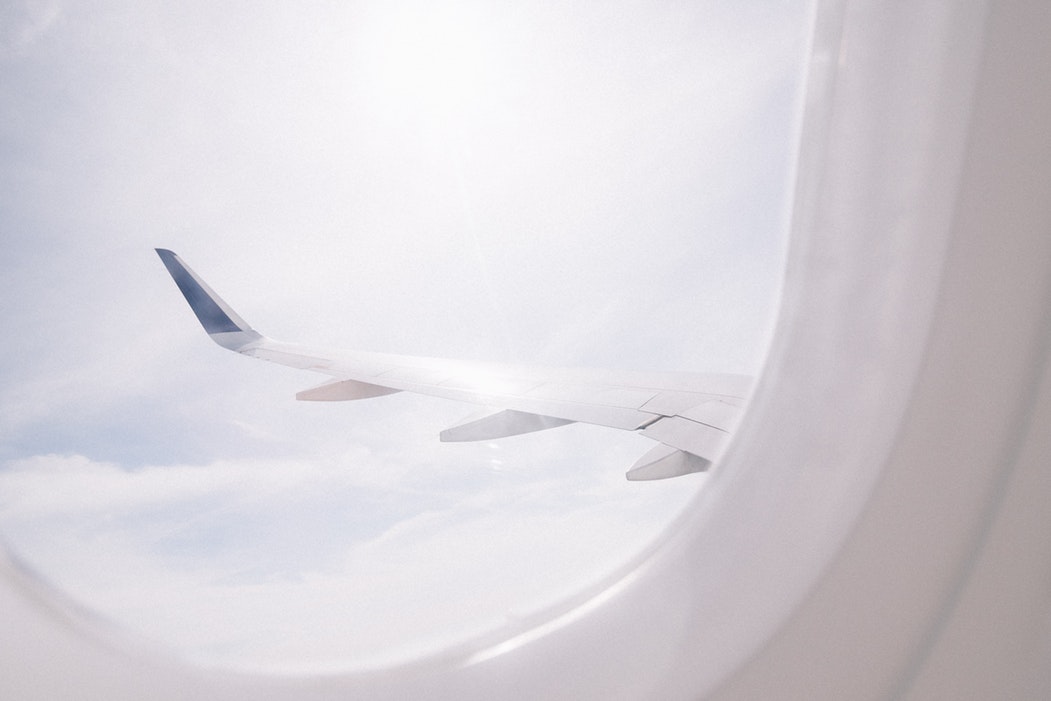
Testimonials from Happy Returning Customers of Travel Passion Inc.
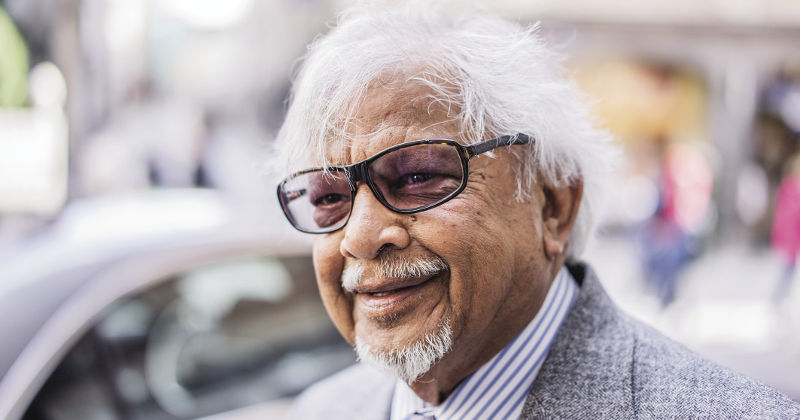
"Made me a Passionate Traveler"
TRAVEL PASSION INC. has made me a passionate traveler. I disliked traveling because is disliked chaos and cancellations but when I got introduced to Travel Passion Inc., a unique and personalized travel agency, they changed my perceptions of traveling. Now I hand over all the organizing details to them and they have never failed me. I am not talking simply of one or two travel plans. They have been my agents for close to ten years and they have handled my groups of up to 34 people and I have never had an excuse to be unhappy or to complain. It is a travel agency with passionate zeal and, though small, they give you the service that leaves you with a smile.
Love Appa
Dr. Arun Gandhi - Grandson of Mahatma Gandhi “Father of Nation”
Video Testimonials from the travellers.
We were a group with many special requests about our itinerary, side trips, interests. Travel Passion and its guides were so wonderful about listening, understanding and giving us our wonderful experience in and with India…with appreciation and love
Susan and I have enjoyed three trips arranged through Travel Passion Inc.
Each one was a bit different. One was the Tour with the E. Stanley Jones Foundation and that trip visited the Ashram founded by Dr. Jones as well as the traditional sites in Northern India.
Our second trip was with the Gandhi Tour, but Susan wanted to do some extra travel, so you arranged for us to visit the South of India before joining the tour.
Finally, you arranged for a special tour for Susan to view some of the textiles in Northern India.
All of these tours involved full accommodations, expert guides, and all necessary transportation from the time we landed to the time we departed.
Outstanding, high-quality customer-oriented service that attended to our every need and wish. Truly a once in a lifetime adventure.
Thank you.
Bascom "Dit" Talley
Washington DC, USA
Get a free quote
Frequently Asked Questions
Q. Traveling to Incredible INDIA and THE SUB-CONTINENT
A. India is a place where destination knowledge and on-ground connectivity is important. With our help, traveling to Incredible India and the Subcontinent is an enjoyable and hassle-free experience.
Travel Passion India (Inc.) provides expert advice, tailor-made itineraries and on-the-ground support with knowledgeable guides, comfortable transportations, and best-in-class hotels.
We take care of the granular details so you can enjoy the grandeur of this incredible, timeless, culturally diverse region.
Q. How to Book my tour?
A. To start off, booking your tour to Incredible India - Look out for Get a Free Quote form which is almost on every page on our website.
Or you can click on the Top Navigation link on the Right corner of the page - Contact for India Tours. (Do leave your phone numbers - as a secondary option - so we can reach out with text messages.)
Or you may consider dropping us an email at mail[at]travelpassioninc{dot}com - (do add us in your contact list - as sometimes email lands up in SPAM box.)
Or you can call us at +91-9811-212-458
Or drop us a message on social media - like Facebook, Twitter or Linkedin.
Q. Does Travel Passion India provides Travel Insurance?
A. No. We Don't. We highly recommend that all travelers purchase adequate trip cancellation, health and baggage insurance prior to travel. It is imperative to carry insurance coverage details with you during the tour.
Q. What are the Health Checks need to make before travelling to India?
We strongly recommend our travellers to carry mosquito repellent lotions / cream during holiday tour.
There are no compulsory vaccinations for traveling to India, although it is strongly recommended that you protect yourself during traveling against the following:
- Tetanus,
- Typhoid,
- Hepatitis A,
- Cholera
- Malaria.
We advise you to consult your doctor allowing at least 4 weeks before the date of travel for all medical advice.
Some areas including Bhutan and Nepal may be at high altitudes. So, people with respiratory ailments need to check with their doctor.
An inoculation against Yellow fever is required if you have visited any infected areas within 5 days prior to your arrival in India.
Q. How to Apply for eVisa for India?
E-TOURIST VISA (eTV)
e-Tourist Visa (eTV) is allowed for multiple visits in a calendar year and can be applied for 120 days prior to departure.
e-Tourist Visa (eTV) once issued it is valid for multiple entry, for 365 days from the date of issue and is non-extendable and non-convertible.
Continuous stay during each visit should not exceed 180 days
To apply for eTV please log on here.
https://indianvisaonline.gov.in/evisa/tvoa.html
Q. What's the Weather in India like?
India is a vast country with diverse seasonal and geographical variations in climate.
Generally, the best time to visit India for your holidays is during the months of October to April.
The Monsoon season starts in mid-May till August - you may like to know about off-season deals. Wildlife sanctuaries & National Parks of India are closed during the Monsoon period.
The summer season is from May to July, in North India. Whereas in July the lower plains of South India start to have some monsoon showers.

